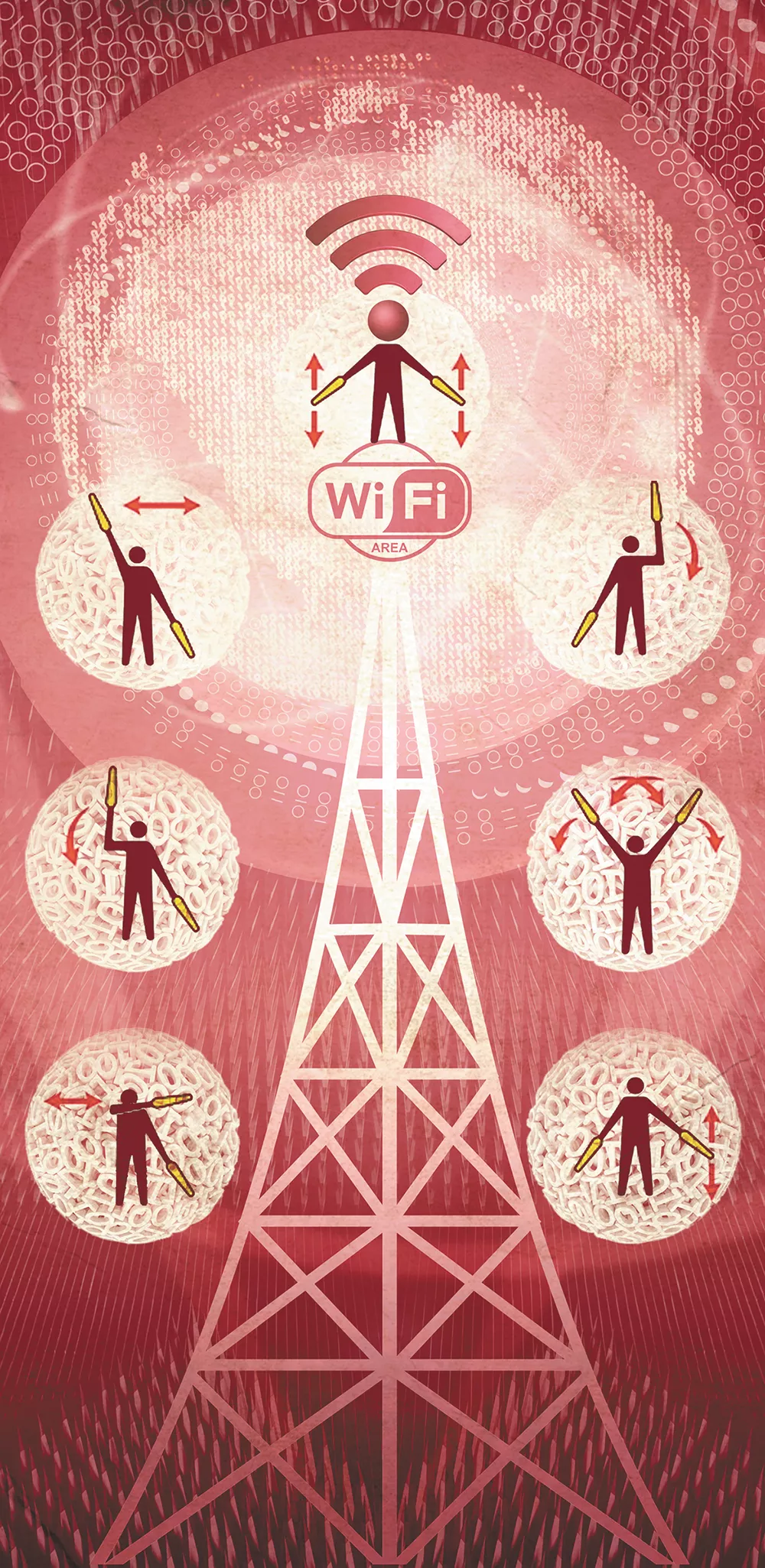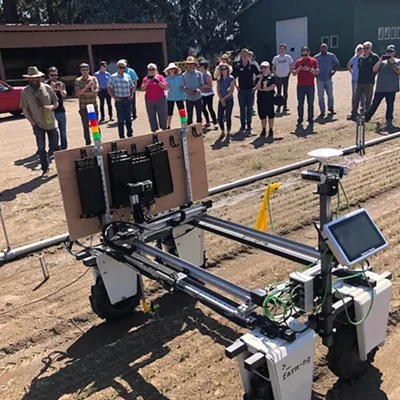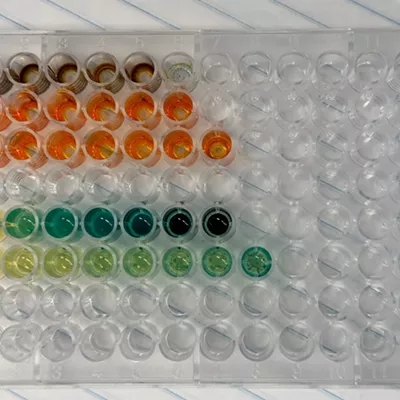You're sitting outside on the patio of your favorite café, surfing the Internet. You catch up on the daily news, watch a few videos, shop for some new hiking boots and tweet a picture of the boots when you're done (#outdoorlyfe). Then you hop on Facebook. "OMG are Mike and Jen back together?" You click on the picture, but it doesn't load. "What the hell? The Internet has been working fine!" (#firstworldproblems). Since you arrived, the patio has filled up with several more café-squatting Internet hogs, each with a few mobile devices begging for a signal.
The cafe's cluttered airwaves are the reason your Internet connection went sour. Cellular, Wi-Fi, GPS and Bluetooth signals all are vying for space among the jammed airwave traffic lanes. Steve Schennum, an electrical engineering professor at Gonzaga University, and his team at the Smart Antenna and Radio Laboratory are trying to fix that problem.
Currently radio waves are optimized by "beamforming," where an antenna shoots a signal directly to the device requesting information in order to give you the most power. In an environment with relatively few antennas, there's no problem. In a place like say Gonzaga's campus, where there are approximately 600 to 700 antennas and thousands of devices constantly requesting power, things can get a little crowded.
In order to cut down on the clutter, Schennum and his crew decided to manipulate wave polarization. The concept is similar to the idea behind polarized sunglasses. When the sun's rays reflect off the surface of the road or water, they can create an intense glare. Polarized lenses are able to cut down that glare because their polarization is different than the reflected rays.
Similarly, manipulating radio wave polarization cuts down interference from other signals. When an antenna sends a signal, it can be vertically polarized, horizontally polarized, even polarized at a 45-degree angle, in a circular pattern and almost any orientation in between. Think of it like this: The pattern of a horizontally polarized radio wave looks like a snake slithering across sand, whereas a circular pattern looks like a stretched-out Slinky. That's important, because signals with different polarizations are invisible to each other: A horizontally polarized signal won't interfere with a vertical signal.
The other half of the process, the receiving end, is actually where the "smarts" are, Schennum says. In order for varied signal polarization to be effective, the device receiving the signal must be able to tell the antenna which polarization is best within the ever-changing environment. That means the device must recognize that vertical and horizontal lanes are jammed and tell the antenna to send a signal with a different polarization — like one at a 45-degree angle. Along with his lab team, Schennum has helped write software that enables radios to do this.
All of this talk of improving wireless communication would have been a pipe dream, however, without a way to test the theory. In 2011, Schennum received a $1.2 million grant from the National Science Foundation to build an echoless chamber. The floor-to-ceiling silver vault has a steel outer shell and spongy cones that line the entire interior to absorb radiation. It's this chamber that allows the Smart Antenna and Radio Lab to test his smart antennas.
"Nothing gets in, nothing gets out," he says. "You go in there with your cellphone or laptop and close the door, and you'll lose the signal completely. It creates an environment that's electromagnetically quiet."
Aside from testing his antenna polarization theory, Schennum says the goal in establishing the lab (which also includes another, smaller echoless chamber) was ultimately to create jobs by helping small companies get off the ground. In addition to giving students employable experience immediately after graduation, the lab functions as a testing ground for companies looking to bring their products into FCC compliance.
For example, when F5 Networks — a tech company whose products help improve security, traffic management and signaling for telecommunications — wants to bring a new product to market, it has to comply with FCC standards. Those standards determine with how much radiation and at what frequency the equipment can operate. It might cost F5 several thousand dollars each time they run a compliance test for a prototype at a certified lab, but only a few hundred dollars at the Smart Antenna and Radio Lab.
"The lab allows small companies to save money on testing, and then they can use their resources to do other things," Schennum says. "By having this here, we invite industry to come and use it, and we invite projects and students to collaborate on projects. The idea is this will create jobs and improve wireless communications."
Possibly the most significant impact Schennum's research could have is with first responder communication. Suppose, for example, an entire city block catches fire. Firefighters, medics and police descend on the scene, and civilians pour onto the streets — calling and texting family that they're OK, streaming video, sending tweets — creating a rush hour in the airwaves. Manipulating polarization clears up the traffic jam by allowing each signal a clear lane to the device it's serving.
"At the end of the day, we make adaptive polarized sunglasses for radios," Schennum says. "If the interference is vertical, we'll go horizontal and everything in between, all other possibilities." ♦



















